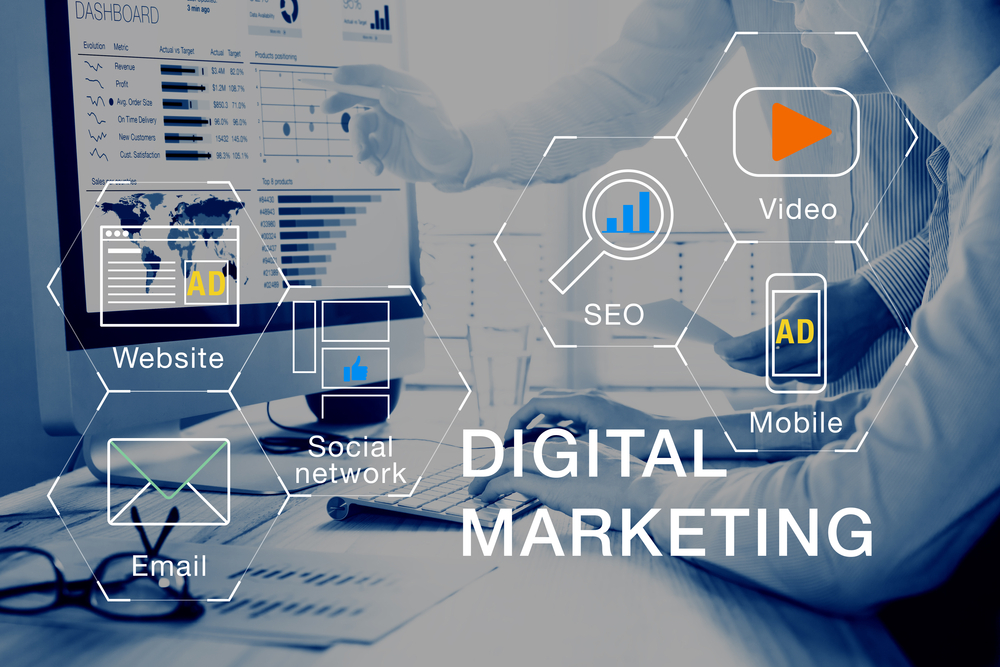Organic vs Paid Marketing: Which is best for my business?

Digital marketers often debate which is better: organic or paid marketing. If you're a business owner, you're probably wondering which should you invest in.
Organic marketing is like waiting for the rain and paid marketing is like using the garden hose. There are advantages and disadvantages to both methods, depending on your business goals.
So, what is organic marketing?
Organic marketing (or Inbound) creates relationships with customers through providing them with useful, engaging content. With organic tactics, you can establish your brand as an authority and create value for customers.
Organic marketing often focuses on Search Engine Optimisation (SEO) to bring readers to your website through the search engine results after they search for relevant keywords and topics that relate to your content.
Instead of interrupting customers with annoying ads, organic marketing draws customers in with quality content that they want to see. Content marketing is an important element of an organic strategy because the content you create is used to educate, inform, entertain and engage your audience.
An organic strategy uses content to carry a customer along each stage of the Customer Value Journey. From aware, engage, subscribe, convert, excite, ascend, advocate to promote, organic tactics give the customer a push to encourage them to complete the journey.
%20(1)%20(1).png?width=1500&name=HubSpot-English-Flywheel%20(1)%20(1)%20(1).png)
Organic marketing interacts with customers in a cycle of attracting, engaging and delighting. It aims to solve problems that customers have with their business or industry. For example, a customer wants to install a skylight but doesn’t know how to. So they Google it, read a useful blog from a roofing company, and then decide to hire them.
In the marketing funnel, organic marketing mostly stays in the awareness and consideration stages. Within organic marketing, your goals can be to:
- Develop brand voice
- Build brand awareness
- Create authentic relationships
- Establish your brand as an expert in the industry
- Drive traffic to your website
- Generate leads
The ultimate goal of organic marketing is not to drive sales, but to engage and educate your audience. Organic tactics are natural, authentic and value-based. The benefits that businesses get from organic are developed over long periods of time, through building up customer loyalty.
What is Paid Marketing?
Paid marketing allows businesses to target, reach, engage and convert audiences quickly and directly. Instead of hoping for someone to find your blog or organic social post, paid marketing has you pushing content (mainly ads) directly to your target audience. So, it’s much more about sales and focuses on driving audiences to complete a specific action, like making a purchase or attending a webinar.
Paid marketing is most effective in driving hard sales and quick results. Each paid ad will point to a product page, specific landing page, or something that will drive financial results. However, you are spending money on these ads, so need to make sure they are effective.
With paid marketing, your ads and tactics must be designed to achieve specific actions. Goals for your paid marketing could include:
- Achieving ROI
- Driving clicks and impressions
- Getting countable results
- Hitting sales targets
- Optimising ads to reach maximum effectiveness
- Testing and refining campaigns
To know if your paid campaigns are effective, you’ll need to look at conversion rates, ad engagements, and which platforms and ad types are performing best. According to Hubspot, 45% of small businesses use paid ads, so it’s worth considering.
A successful paid search campaign uses a variety of social media, google and retargeting ads across multiple platforms. Having a strong PPC campaign can win you more qualified leads, sales and increased ROI.
So, why pay for ads, when you can reach customers organically? Paid marketing helps you rise to the top in a competitive market and reach customers who didn’t know you exist. Also, the immediate return of paid campaigns can be attractive, rather than waiting months for organic content to gain enough traction to convert.
So, what are the key differences?
In the end, both organic and paid marketing will both promote your company and generate you more sales. But, there are some important differences between them.
- Organic content can be evergreen while paid is temporary
- Organic marketing is less expensive than paid
- Organic takes time while paid delivers more instant results
- Organic is content-driven
What are the benefits of each?
Organic:
- Cheaper
- Builds relationships
- Provide higher ROI
- Build strong foundation
- Not disruptive
Paid:
- Get seen quickly
- Easy to track sales
- Easy to track ROI
- Fast and easy set up
- Can use PPC to boost other marketing efforts
- Only pay when they click
- Control incoming traffic
Ideally, you should use an integrated approach that blends both organic and paid techniques for the ultimate digital marketing strategy for your business.
An Integrated Approach
Paid and organic marketing complement each other. There’s even some overlap between the two, as both can be used to drive engagement and conversions, just in different ways.
Paid is obviously the more expensive option. Not every business can afford big paid campaigns, but they can create organic content. A marketing strategy built solely on paid will be shallow and won’t connect with customers. If all customers see is ads, with no educational content, no entertaining social posts, no informative emails, they will lose interest in your brand. Here’s why:
- They will have no emotional connection with your brand
- They will have fewer ways to connect with your brand
- They won’t have a personal relationship with your brand
- They won’t see your brand as an authority (and may choose a competitor)
It’s important to get the balance right as you build your marketing strategy. Think about how you can achieve each of your business goals through a mixture of organic and paid tactics.
Combining paid and organic marketing gives you a double-edged sword to increase brand awareness while building relationships with customers.
An integrated strategy can bring powerful results for your business. At Margin, we help businesses to rewire their marketing into a fusion of amplified ads and compelling content. Talk to us to increase your digital footprint today.


